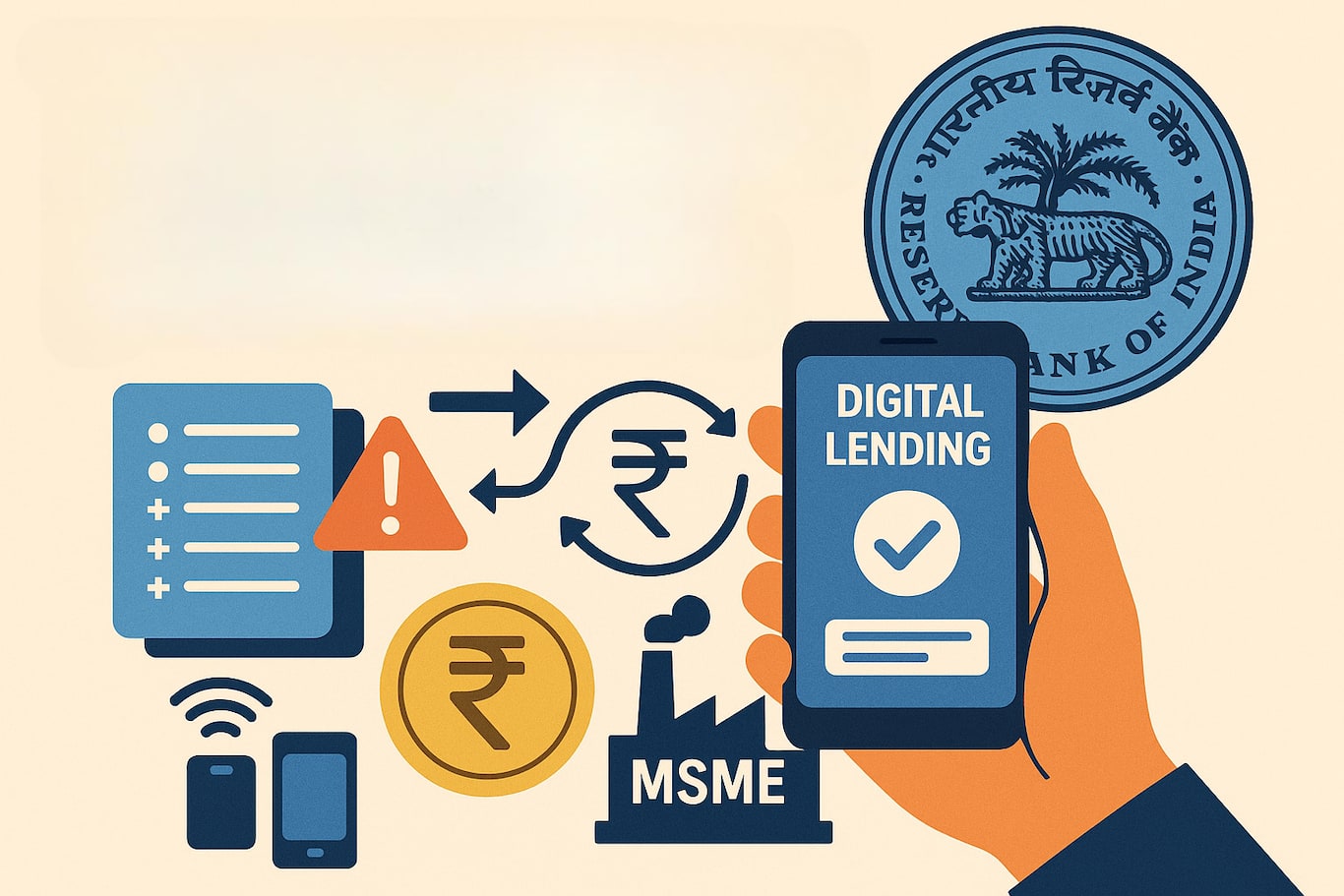With India’s MSME ecosystem embracing digital growth, the RBI's recent directions on digital lending represent a pivotal shift, trading regulatory grey areas for clear accountability.

The RBI has asked lenders to report the details related to DLAs linked to them to the central bank’s CIMS. (Source: financialexpress)
The Reserve Bank of India’s (RBI) move to regulate India’s burgeoning digital lending ecosystem with a consolidated and updated set of directions has the potential to reshape how MSMEs engage with digital credit.
According to experts, the guidelines aimed at improving transparency, accountability, and borrower protection, and applicable to regulated entities including banks, NBFCs and their partner digital lending apps (DLAs) and lending service providers (LSPs) can help streamline access to capital for MSME sector which faces a staggering credit gap of around Rs 30 lakh crore.
Among the most impactful steps by the central bank is the creation of a public directory of digital lending apps (DLAs), which will allow borrowers to verify whether a particular app is legitimately linked to a regulated lender.
The RBI has asked lenders and financial institutions to report the details related to DLAs linked to them to the central bank’s Centralised Information Management System (CIMS). Moreover, the Chief Compliance Officer of the respective financial institution will now be responsible for ensuring compliance.
According to Deepak Aggarwal, Co-founder & Co-CEO, CFO at small business lender Moneyboxx Finance, the move is especially relevant for MSME borrowers in semi-urban and rural areas, where the risk of misinformation and exposure to unregulated digital lenders has been a growing concern.
“This will ensure that unscrupulous entities are timely detected for safeguarding the interests of the borrowers on the digital platforms,” echoes Jyoti Prakash Gadia, Managing Director at advisory firm Resurgent India.
The RBI's guidelines are also likely to address critical challenges around mis-selling and predatory pricing which have impacted the MSME sector in the past.
For instance, while the remote and automated lending process has an inherent advantage of speed, accuracy and template-based uniformity in lending; retail borrowers, particularly MSMEs, are susceptible to concerns like mis-selling, unfair business conduct, and exorbitant interest rates.
Gadia asserts that the new guidelines aim to address these issues with new measures and arrangements involving LSPs and DLAs.
“In case of LSP having arrangements with multiple lenders, the financial institutions will need to have a more robust mechanism to ensure that a fair comparison of products is available with unbiased information without favouring a particular lender,” says Gadia.
This is expected to make lending to the MSME sector more transparent and easier with greater objectivity and better inter-se comparison of products being offered by various lenders like banks and NBFCs.
Eklavya Gupta, Co founder and CEO at debt marketplace for MSMEs and startups Recur Club adds that while MSME borrowers would be able to compare the loan offers themselves, the intermediaries will be required to maintain neutrality and not promote any particular products or lenders.
“With transparency bringing consumer awareness along with no influence in decision making and knowing what’s available to them and what they want to sign up to, MSMEs will benefit,” he says.
Further, the updated rules also stress transparent disclosures through a Key Fact Statement (KFS), strict data privacy, fair contracts, a cooling-off window, and accessible grievance redressal. Notably, lenders will retain full accountability for any shortcomings by their partner DLAs or LSPs.
“The requirement for a KFS in simple language, automatic sharing of digitally signed documents, and real-time reporting of all DLAs on the RBI portal are expected to empower borrowers with greater control and awareness,” says Mukul Goyal, Founder of Stratefix Consulting.
MSMEs, says Goyal, will benefit from faster approvals, fewer documentation hurdles, and reduced reliance on collateral on the back of AI-driven credit assessments and digital KYC.
With India’s MSME ecosystem embracing digital growth, the Reserve Bank’s latest directions on digital lending represent a pivotal shift, trading regulatory grey areas for clear accountability and ushering in a more transparent, borrower-centric framework.
However, the real test will lie in the consistency and rigour of implementation and whether they can maintain a fine balance between progress and prudence in a fast-changing digital landscape. For the moment, the guidelines reflect a strong regulatory intent.
Empower your business. Get practical tips, market insights, and growth strategies delivered to your inbox
By continuing you agree to our Privacy Policy & Terms & Conditions
